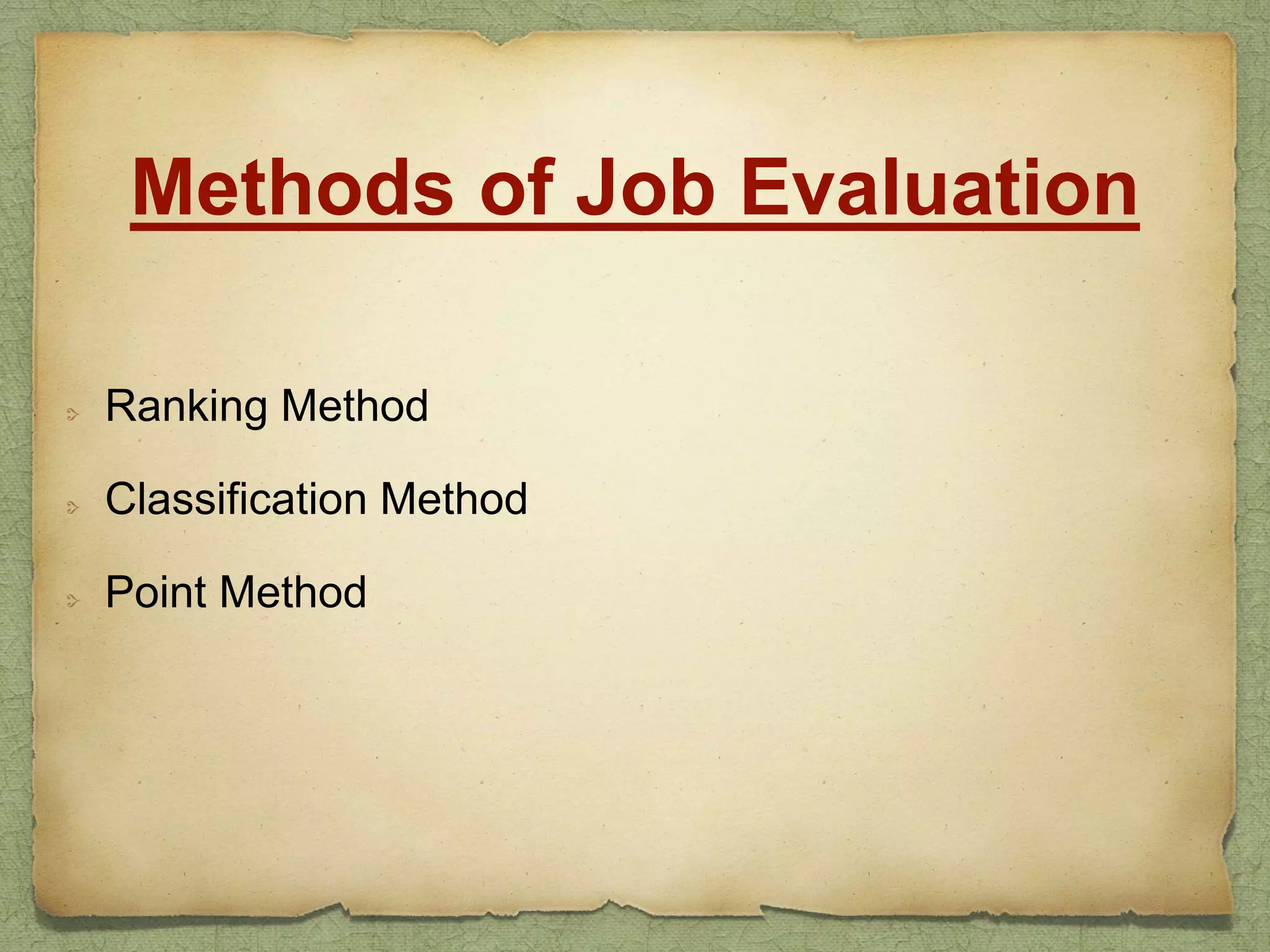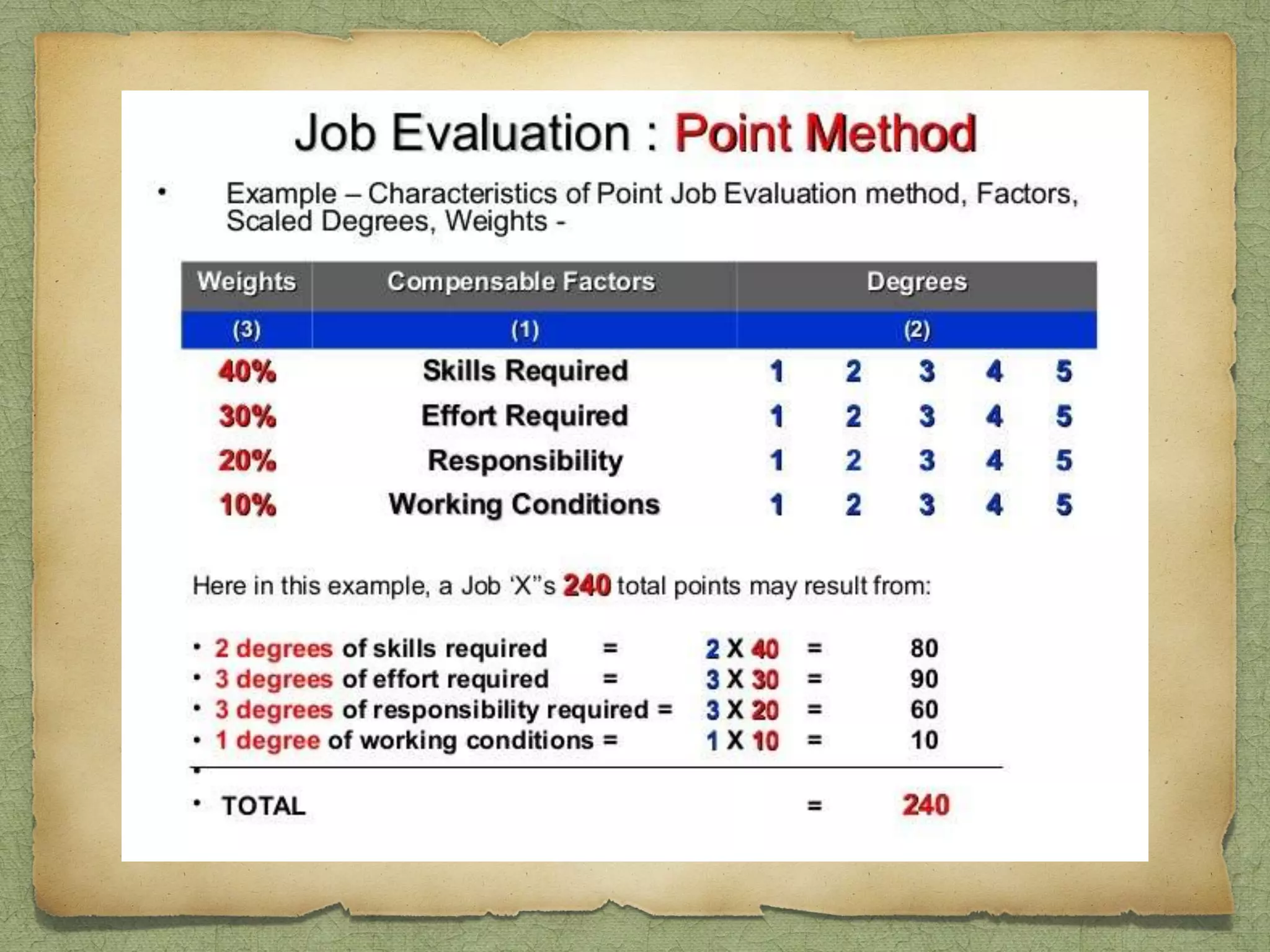Job evaluation is the process of determining the relative worth of jobs within an organization. There are several methods of job evaluation including ranking, classification, and point methods. The ranking method simply arranges jobs in order of value. The classification method groups jobs into predefined grades or classes based on common attributes. The point method expresses jobs in terms of key compensable factors, which are scaled, weighted, and summed to determine appropriate pay grades. It is considered the most systematic approach. The process involves job analysis, identifying relevant factors, developing scales and weights, applying the plan to benchmark jobs, training users, and applying it to non-benchmark jobs.
















